Jet skis are a great way to spend time on the water in the summertime and create some memorable times with family and friends. In order to have a great time, you will need to know the laws for riding a jet ski according to the state you reside in. Rules and regulations can vary from state to state and it is a need-to-know in order to be able to enjoy your time on the water.
Within the state of California people who wish to operate a boat or personal watercraft vehicle must be under adult supervision if they are between the ages of 12 and 15 years of age and operating a personal watercraft vehicle that is greater than 15 horsepower. While operating a PWC you must also wear a personal flotation device that is approved by a U.S. Coast Guard.
It is important to be aware of the following regulations and laws for riding a jet ski on the water within the state of California. By doing so you are responsibly following the law and that will guarantee you have an adventurous and stress-free time on your jet ski with family and friends.
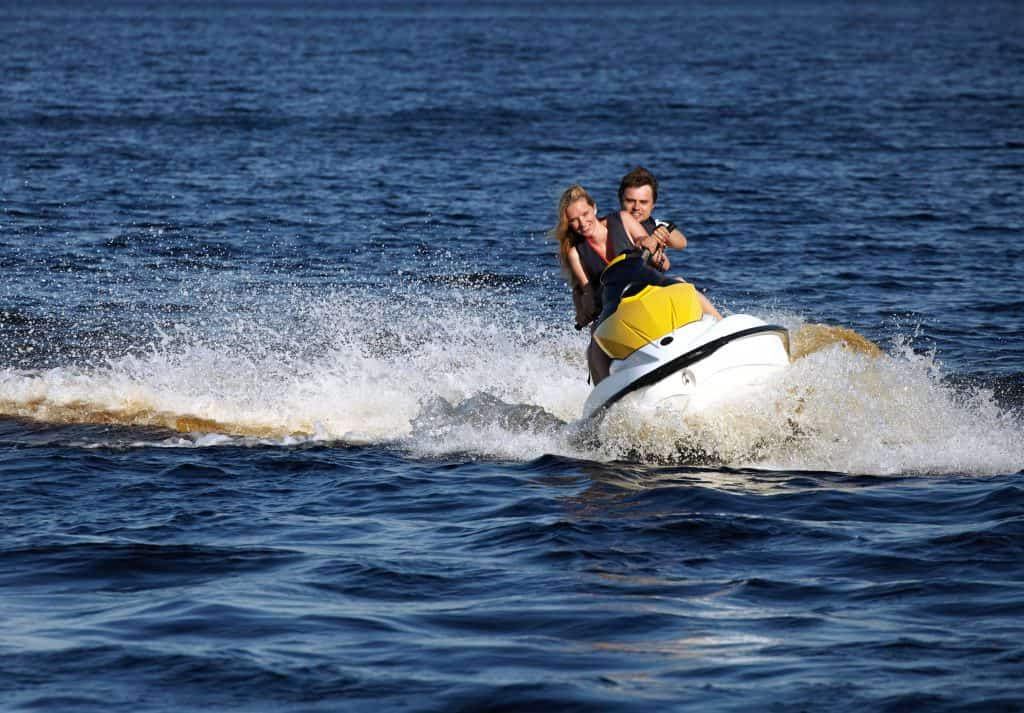
Registering Your PWC or Vessel
Registration
Registering your vessel is a step towards being able to lawfully riding it on the water. There are requirements for registering your vessel that you will need to consistent on taking care of first.
You can fill an application to register your vessel in writing, and you can mail in your application to:
Department of Motor Vehicles, Registration Processing Units, P.O. Box 942869, Sacramento, California
Numbers and Stickers
Once you receive your registration number and the validation stickers you must display these items in the following ways:
- Each number has to be painted, applied onto your vessel as a decal, or place to be shown on both sides of the bow.
- the numbers must be read from left to right on both sides.
- Each number must be in block letters and three-inches high.
- The color of your numbers must also be in contrast with the background of your vessel.
- The letters have to be separated from the numbers with space or a hyphen.
- There cannot be any other numbers shown on the bow of your vessel.
Hull Identification Number
A Hull Identification Number (HIN) is a 12-digit number that is assigned by the manufacturer to vessels built after 1972. They help be able to determine the difference between multiple vessels.
In case your vessel is stolen you should write down your HIN number and put it somewhere safe.
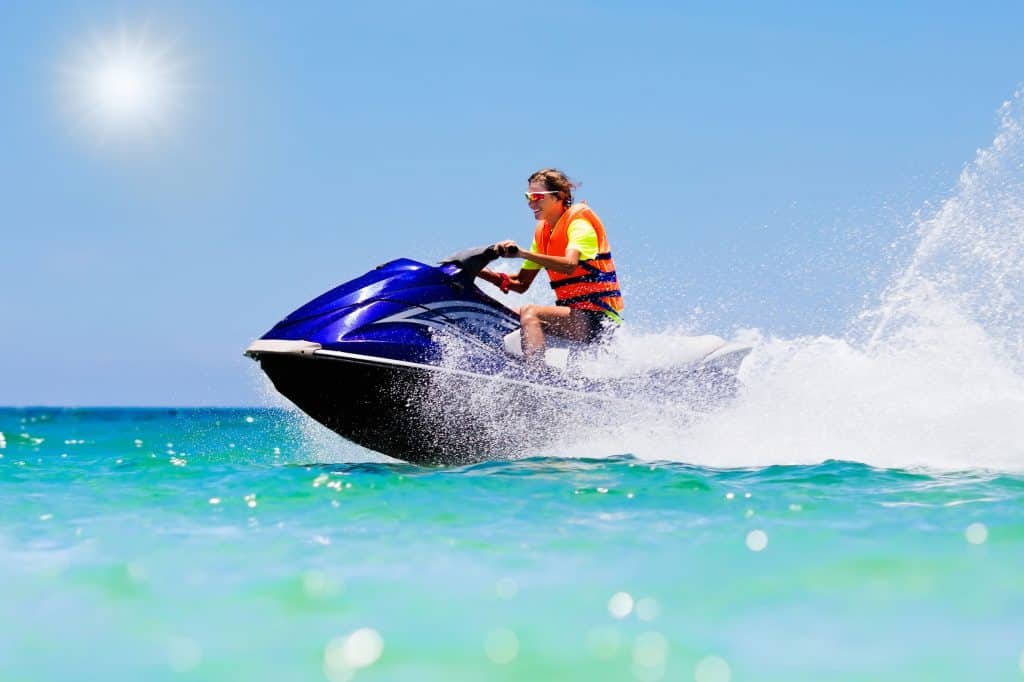
The Basic Rules and Regulations
Court Ordered Boating Education
If you happened to be convicted of any moving violation that is found within the Harbors and Navigation Code, the Federal Rules of the Road and regulations that are found within the California Department of Boating and Waterways then you must be ordered by the court to complete a boating safety course as well as pass it.
Once you have completed the course you will need to obtain a form of proof of your completion and submit it to the court within seven months of the time of when you were convicted of the moving violation.
California Boating Laws
| Code Sections | – California Harbors and Navigation Code, Section 678-678. 15, Vessel Operation – California Harbors and Navigation Code, Section 655, Negligence/Boating Under the Influence; – California Harbors and Navigation Code, Section 656 et. seq., Accidents |
| Age & Education Requirements | In the state of California, anyone under the age of 16 cannot operate a PWC or vessel of more than 15 horsepower. Although, those16 years of age can operate: – a sailboat that is under 30 feet in length – a vessel, where its purpose is to is to move between a moored boat and shore – under the supervision of an 18-year-old adult where the child is between 12 and 15 years of age |
| Boating Under the Influence | Boating Under the Influence: It is illegal to be intoxicated while boating in the state of California. To be convicted of boating under the influence your blood alcohol content will be 0.08 percent or greater. This is a Class B misdemeanor and you can be punished with a term of 72 hours in confinement. Addicts: Anyone who is addicted to any drug is prohibited from operating any vessel, water skis, aquaplane or jet ski and anything else that is a similar device. (Though there is an exception to those who are participating in a narcotic rehabilitation program that is approved by the state). Presumptions: Blood-alcohol testing may not occur until a later time so it is allowed for presumption’s regarding one’s sobriety to be taken into account the amount of time a person has between the apprehension and the administration of the BAC test. |
| Boating Accidents | If a PWC or boating accident occurs it is your obligation to stay, assist the injured, and provide information to those that have been hurt and inform whosever property was damaged by the accident. Accidents must be reported if one of the following occurs: – death, disappearance, or injury that is beyond first aid – damage of property that exceeds $500 – the complete loss of a vessel, regardless of its value The accident must be reported within 48 hours if one or more of the following is involved: – a death that occurs within 24 hours of the accident – a person’s disappearance – an injury is beyond the care of first aid The accident must be reported within 10 days if it involves one or more of the following: – a death occurs more than 24 hours after the accident – there is property damage that amounts to $500 or if there is a total loss of the vessel or PWC If an accident involving the death or disappearance of a person, the one operating the vessel or PWC must inform the law enforcement agency unless a peace officer was at the scene of the accident already. |
Unlawful Operation of a Vessel
Reckless Operation of a Vessel
Failure to Regulate Your Speed
This is operating your vessel at a faster rate than recommended, especially during vessel traffic, poor weather conditions, and closeness to shore. Some examples of this are:
- Operating your vessel at extreme speed in the close vicinity of another vessel, PWCs, or dangerous waters.
- Operating at a greater speed than “slow, no wake speed” that is posted in a “no wake” zone.
- Going faster than the speed limit posted near the body of water you are operating on.
- Going at a speed that can be harmful to your vessel.
Improper Distance Between Others
If you are operating your vessel faster than 5 mph while operating within 100 feet of the shore, dock, pier, raft, float, or an anchored or moored vessel you are operating your vessel improperly and putting others around you at risk.
Riding on the Bow, Deck or Gunwale of a Vessel
Riding on anything that is not equipped with fixed seating can lead to the potential of falling overboard. Do not allow your passengers or yourself to sit on seat backs, transom, gunwale, seats on raised decks or a bow.
Reckless Operation Specifics
This is when you weave through traffic, swerve last minute to avoid a head-on collision with another vessel, or overload your vessel beyond the capacity it states on the plate.
Unsafe Conditions
Not having enough personal flotation devices, fire extinguishers, backfire flame arrestors, ventilation systems, or navigational lights are putting yourself and others abroad your vessel at risk.
You also put yourself and others in danger when you overload or overpower your boat, or when if you are operating the vehicle while intoxicated.
Towing Someone With a Vessel (Legally)
Anyone operating a vessel that happens to be towing someone behind them must adhere to the following rules and regulations created to keep both the operator and person being towed safely.
- Anyone being towed behind vessel or PWC must wear a personal flotation device that is approved by the U.S. Coast Guard.
- Inflatable PFD’s are not approved by the U.S. Coast Guard and therefore cannot be used while on the water.
- It is illegal for operators of vessels or PWCs to tow skiers, skiboard, or any other device between sunset and sunrise.
- Water-skis and other devices similar to that cannot be used in such a way that it may cause harm to the person being towed or anyone else around them
- Every PWC or vessel that is towing someone must have a person on board besides the operator. This is simply so the other person can observe the person being towed and keep them safe
- The operator must use a ski flag whenever:
- A skier is downed in the water
- A skier is preparing to ski on the water
- A ski that is in the water near the PWC or vessel
- A ski rope is extended from the PWC
Alcohol and Drugs
Alcohol and drugs can cause you to have impaired balance, blurred vision, poor coordination, impaired judgment, blurred vision, poor coordination, and impaired judgment.
By being under these impairments while operating a vessel or PWC you are putting yourself, those riding with you, and other operators of another vessel in danger.
- It is illegal to operate a vessel, with a blood alcohol concentration of .08% or greater. A level of at least .05% but less than .08% can still be used to determine whether that person is operating under the influence.
- It is also illegal for anyone under the age of 21 to operate a PWC with a blood alcohol concentration of .01% or greater.
Penalties you can face for boating under the influence of drugs and alcohol are:
- A $1,000 fine and up to six months in jail.
- A revoke or suspension of your vehicle driver’s license for up to five years.
By going onto California waters you consented to be tested for drugs and alcohol if you are arrested by a law enforcement officer. If you refuse to consent to this you will have your penalties increase.
Contact
To be able to keep up on the new boating laws and requirements you can call the California Department of Boating Waterways or you can even contact the U.S. Coast Guard’s Boating Safety Infoline.
California Department of Boating Waterways: 1-888-326-2822
U.S. Coast Guard’s Boating Safety Infoline: 1-800-368-5647
Website: www.dbw.ca.gov
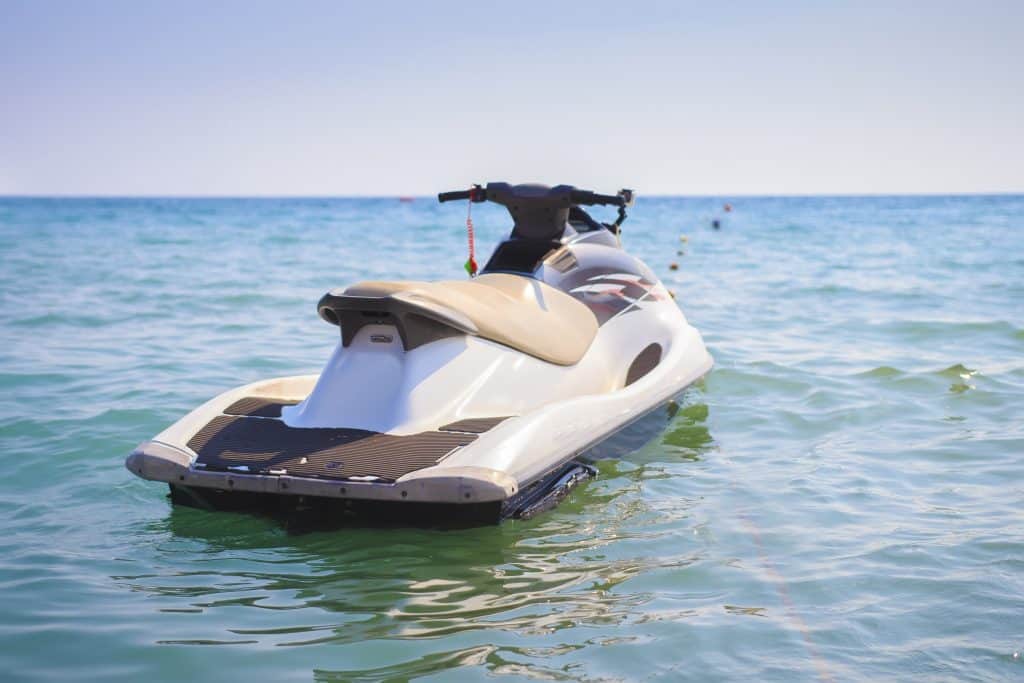
Required Equipment
Personal Flotation Devices
| Type 1 | Offshore Life Jackets | This vest can turn an unconscious person in the water to face up in the water. It was made for rough waters and for situations where rescue might take a long time. |
| Type 2 | Near-Shore Vests | This vest is fit for calmer waters and faster rescues. If you were to wear this while unconscious it may not be able to turn your face up in the water. |
| Type 3 | Flotation Aids | This vest can also be a full-sleeved jacket and it is great for calm waters and fast rescues. This will definitely not turn your face up in rough waters. This is generally worn for water sports. |
| Type 4 | Throw able Devices | This type of flotation device is a cushion or ring buoys and are typically used to throw at someone in trouble. They are not made to last for long hours in the waters, or non-swimmers, or the unconscious. |
| Type 5 | Special-Use Devices | This type of flotation device was made for activities like kayaking, water-skiing These typically look like white water vests, deck suits, and personal flotation device hybrids. |
Personal Flotation Device Requirements
- All PFDs have to be in a serviceable condition and easily accessible.
- Any person that is on board a PWC must wear a PFD that is approved by the U.S. Coast Guard.
- Vessels have to have one of the 5 personal flotation devices, they also must be wearable and a proper sized so anyone can wear it.
- The inflatable flotation devices can be used if the person is 16 years of age or older, can be activated by a pull and if it is U.S. Coast Guard approved.
- It is California law that children who are 12 years old must wear a U.S. Coast Guard approved flotation device in a vessel that is 26 feet long or less.
- Type 4 PFD that is approved by the U.S. Coast Guard must be on board a vessel that is 16 feet or longer and must be easily accessible for emergency use.
Fire Extinguishers
You can classify your fire extinguisher by letter and number symbol. The number helps you decipher the size of the extinguisher, and the letter indicates the type of fire that is extinguished as well.
Type A Fires – Are of combustible solids such as wood
Type B Fires – These are flammable liquids like gasoline or oil
Type C Fires – This is mainly electrical fires
All vessels are required to have a Type B fire extinguishers on board in the case of any extreme or dangerous situations occurring. Your fire extinguisher should be placed somewhere easily accessible in the case of a situation where it needs to be used immediately.
Backfire Flame Arrestors
There is a chance that your PWC engine may backfire so it is required for vessels or PWCs to have an approved backfire flame control device that is installed into their carburetor.
Proper Ventilation
The ventilation system is extremely important to have installed in your vessel. Their main purpose is to reduce the chances of an explosion from happening.
- All vessels powered by gasoline are created in a way that it would be able to entrap fumes, have two ventilation ducts with cowls that help remove those fumes.
- If you happen to have a vessel without a powered ventilation system you can open the engine compartment and smell for any gasoline fumes before you start up your engine.
- Before you start the engine or your vessel and after fueling it you should turn it on for at least 4 or 5 minutes if it is equipped with a power ventilation system.
Mufflers and Noise Limits
Any motorized vessel or PWC must be muffled from exceeded the following noise levels:
- 90 decibels if the engine was manufactured before January 1, 1993.
- 88 decibels if the engine was manufactured on or after the date of January 1, 1993.
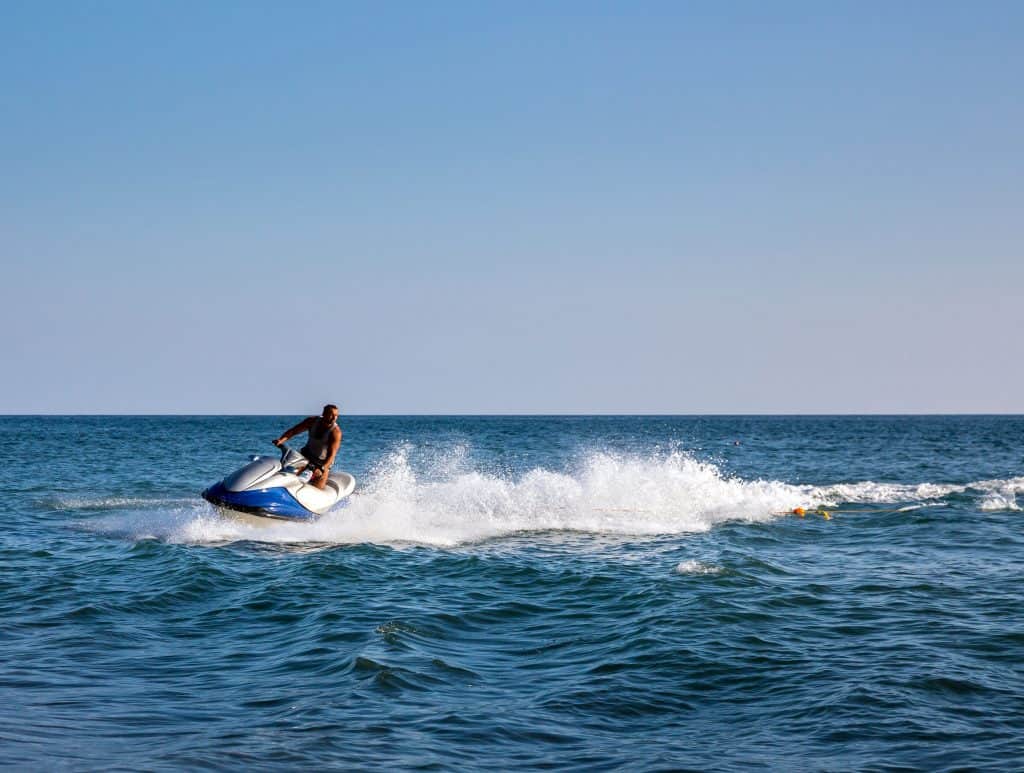
Navigation Lights
Power-Driven Vessels When Underway
The lights required on a vessel like this one is:
- Red and green sidelights that can be visible from at least 2-miles away, and at least a mile away on a clear, dark night.
OR
- An all-round white light that can be seen from at least two miles away on a dark, clear night. The lights must be 3.3 higher than your sidelights.
Unpowered Vessels When Underway
Lights required for this vessel are:
- Red and green sidelights that can be seen from two miles away. The sunlight must also be visible from 2 miles away.
OR
- You can bring on board a lantern or flashlight that shines white light.
All Vessels When Not Underway
- ALL vessels must show a white light in all directions if they are anchored outside a mooring area between the hours of sunset and sunrise.
Visual Distress Signals
Visual distress signals are used for when vessel or PWC operators need to signal for help in the eve of an emergency on the water.
Vessels operating on federally controlled waters must be equipped with visual distress signals that are approved by the U.S. Coast Guard. A list of approved VDS’ can be found below:
| Pyrotechnic Visual Distress Signals | |||
| ORANGE SMOKE | RED METEOR | RED FLARE | |
| Day Signal | Day and Night Signal | Day and Night Signal | |
| Non-Pyrotechnic Visual Distress Signals | |||
| ELECTRIC LIGHT | ORANGE FLAG | ||
| Night Signal | Day Signal |
A minimum of three VDS’ must be carried on your vessel or PWC.
It is also important to note that it is not advised nor encouraged to use these visual distress signals on the water if you do not need assistance or if you are not in immediate or potential danger.
Pyrotechnic Devices
- While these visual distress signals are extremely effective they can also cause harm if not handled correctly.
- These devices produce a hot flame and residue that can cause burns and even ignite flammable material.
- Parachute flares and other pistol-like devices have many characteristics like a firearm and must be treated with caution (In some states they are considered firearms).
- These types of devices should be stored in a cool, dry, and easily remembered location.
Non-Pyrotechnics Devices
- This type of visual distress signal needs to be readily accessible, certified with the USCG requirements and in serviceable condition.
- A distress flag is a day signal only. It typically needs to be 3×3 feet with a black square and ball on an orange background.
- the electric light is designed to be used during the night and it must also be able to automatically flash an SOS signal, that way those around or near you will be able to know you are in need of help.
Arm Signal
This is a day signal and its action is to summon help if you do not have any other visual distress signals on board your PWC or vessel. It is important to keep several VDS in order to avoid a situation where you must resort to an arm signal.
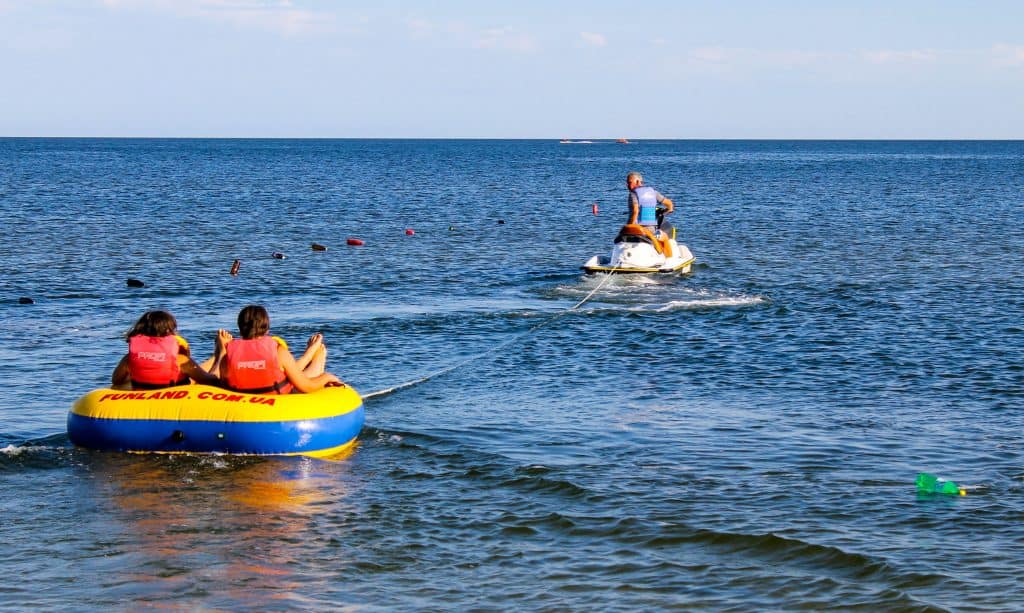
Discharge of Trash, Waste, and Hazardous Substances
If in the case your vessel or PWC discharges oil or any other hazardous substance make sure to call the U.S. Coast Guard immediately, at this number: 1-800-424-8802.
Trash
- When it comes to charging trash, it is illegal to dump plastics or garbage into any federally controlled or even state waters. You have to keep your trash on board, sealed and contained to where it will not fall out.
- A Garbage Disposal Placard must be required if you are boating on federal waters and especially if your vessel is 26 feet or longer. The placard is a durable sign that helps notifies passengers and crews about discharge restrictions.
Waste
- When it comes to the disposal of the waste you will need to have a marine sanitation device (MSD) while traveling on California state waters.
- Jet ski users do not have to be concerned with this regulation since there is no way for a jet ski to have installed toilet facilities.
Hazardous Substances
- It is against the law to discharge any hazardous substance or oil into California state waters, and if you fail to follow this law you will be charged $10,000.
- You cannot dump any oil into the bilge of your vessel without a proper way of disposing of. You can purchase bilge pads for any fuel spills. The pads are able to remove the spill with its absorbency.
- If you must discharge oil waste you can do so at your local reception facility. If you are on a recreational vessel a bucket works just as well.
Boating or PWC Accidents…What You Should Do
In the event of a PWC or boating accident you must do the following:
- Stop the vessel immediately and safely.
- Assist the person who was injured and asses the injuries they have gotten.
- Give, in writing, the name of the person, their address, and the vessel identification number to the owner of the property that was damaged.
- To report an accident you can contact the sheriff’s or harbormaster’s office or many other police departments. You can also report this online at the Department of Boating and Waterways website.
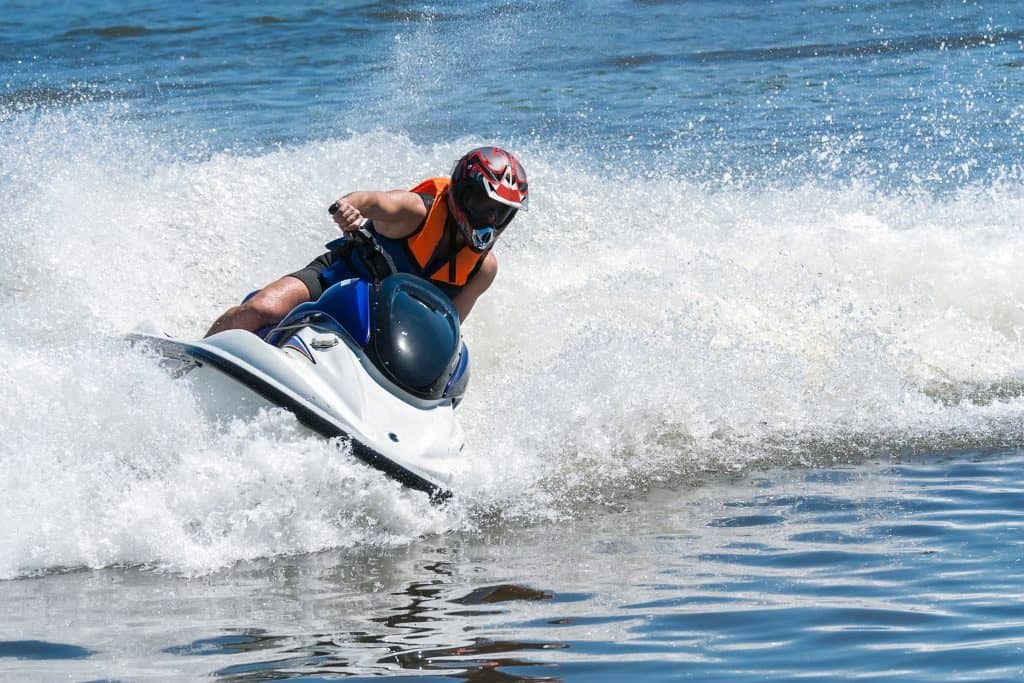
Rules and Regulations Specific to PWC
- You cannot operate a personal watercraft vehicle within 500 feet of a designated swim area.
- Reckless operation of a PWC is not allowed. Examples of this:
- Jumping a wake too close to other vessels
- Last minute avoidance of collision
- Weaving carelessly through vessel traffic
- Carrying more passengers on your PWC than is recommended
- If you maneuver your PWC in such a way that it can cause unreasonable harm to you or your passengers
- It is illegal to operate a personal watercraft vehicle between the hours of sunset and sunrise especially when your vision is a bit restricted.
- You cannot remove any backfire flame arrestor or ventilator if it is installed by your manufacturer
- You must have a whistle or horn on board your PWC that is U.S. Coast Guard approved
- The safety ignition switch must be fully functional and have a lanyard attached to it to ensure it does not get lost or misplaced
- Each person on the PWC must wear a U.S. Coast Guard approved type 1,2 or 3 personal flotation device
Enforcement and Penalties
The boating laws and regulations are enforced by the following State Park police, sheriff departments, local, county, and State police, the Department of Environmental Conservation, and Harbormasters and Bay Constables.
Those following individuals have the authority and power to stop and test a vessel operator if they feel they have enough reason to do so.
- Any vessel that is being approached by an enforcement officer must come to a slow speed to where the vessel can maintain steerage to be able to alter course if told.
- If an officer finds they have enough probable cause to believe you are violating a law, they have the authority to board your vessel.
- Officers are also authorized to order the owner/operator of an unsafe vessel to move to shore.
- A vessel ordered to stop by an officer must do so immediately and permit the officer to come alongside their vessel.
False Search and Rescue Calls
- If one were to report to a state agency (or even a local one) that an emergency has occurred with full knowledge of it not being true will be deemed guilty of a misdemeanor, and in some rare cases, even a felony.
